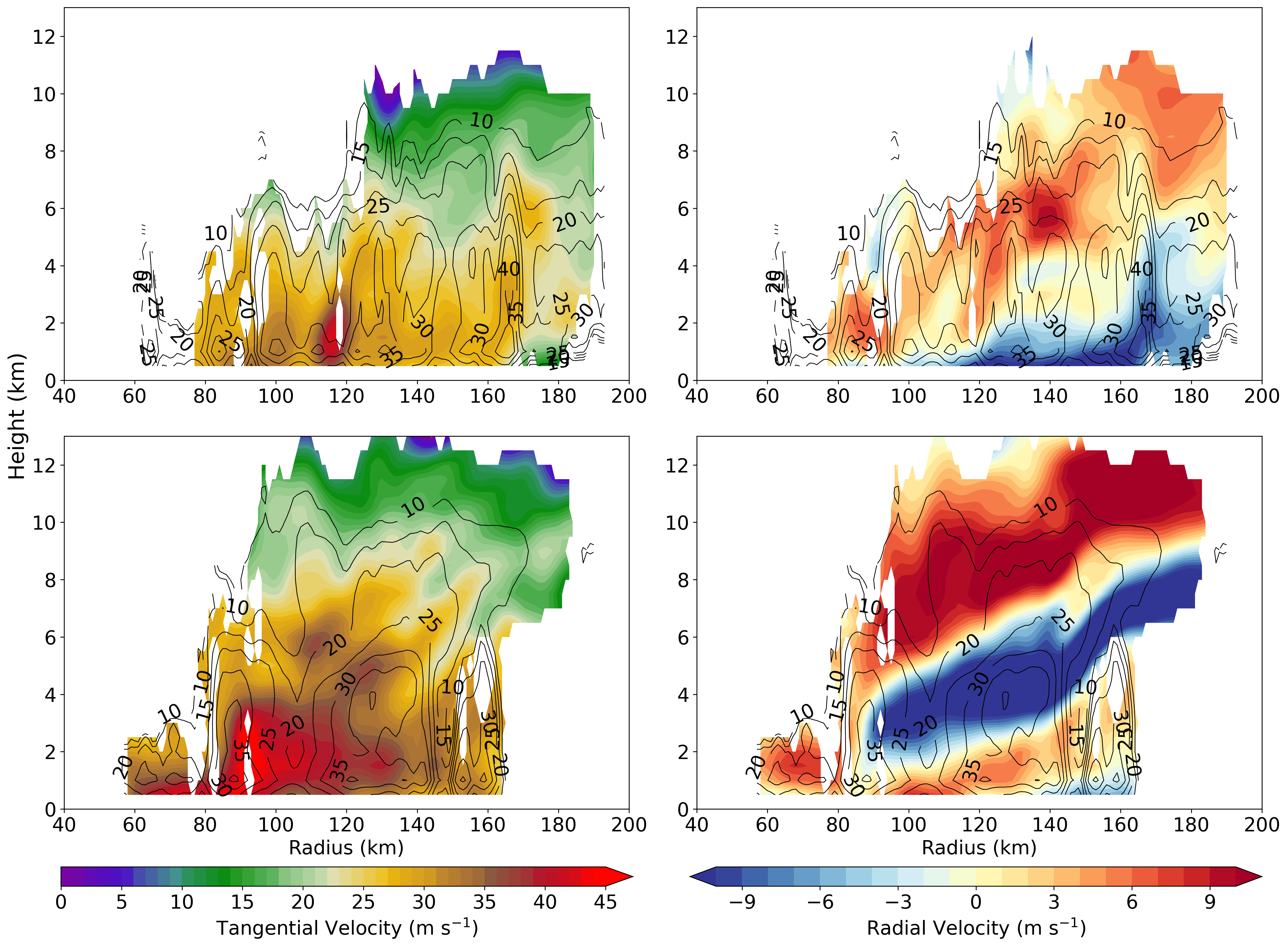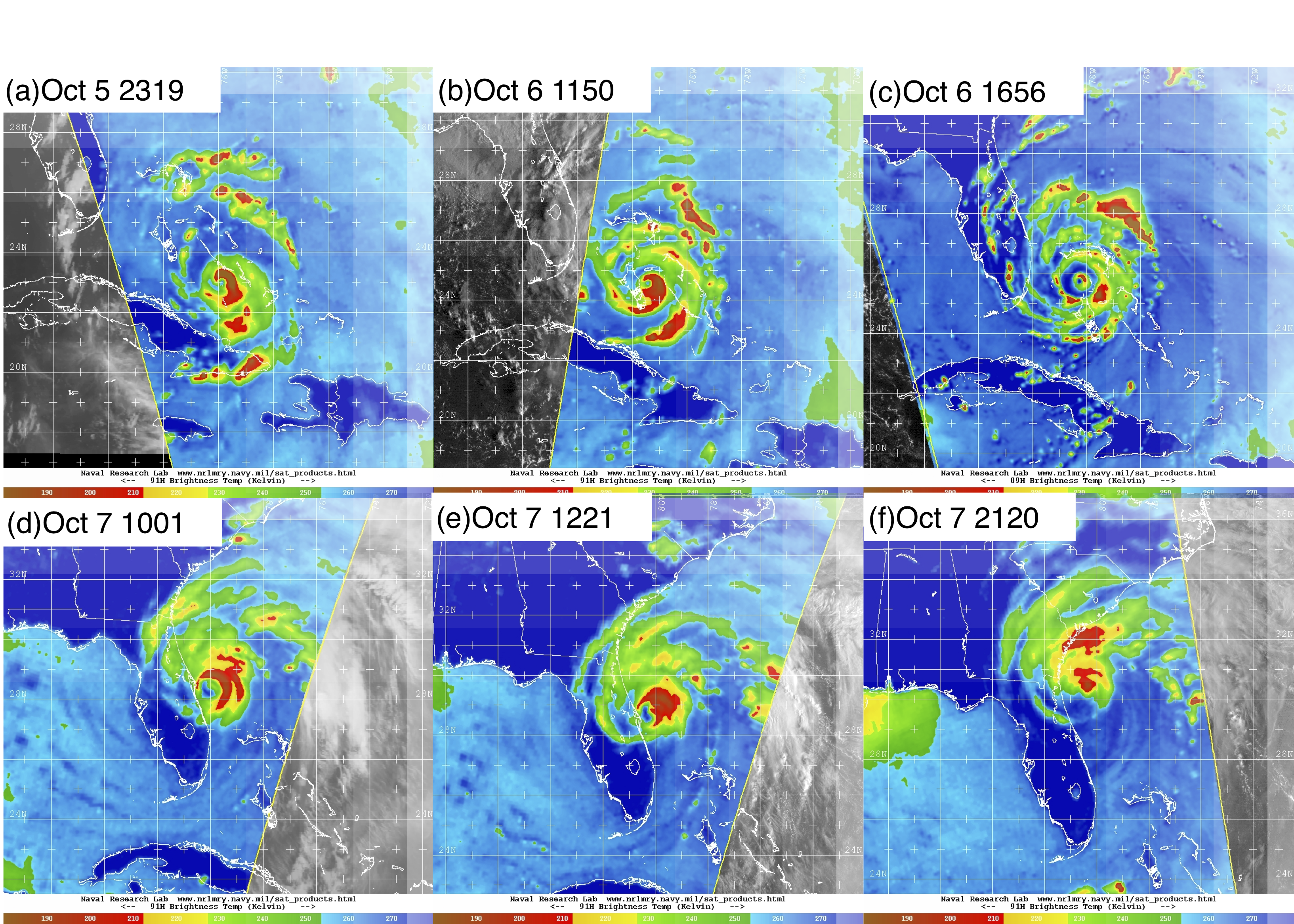The Unconventional Eyewall Replacement Cycle of Hurricane Ophelia (2005)
Group Members: Naufal Razin , Michael M. Bell
Using flight-level and airborne radar data, Hurricane Ophelia was shown to have undergone an unconventional eyewall replacement cycle (ERC). Ophelia\'s ERC was unconventional because it occurred while the storm was at Category \1 intensity and located over anomalously cold sea surface temperatures. Airborne radar analyses showed that the expansion of Ophelia\'s wind field associated with the ERC occurred in the dominantly stratiform rainbands, indicating that the stratiform kinematics in Ophelia's rainbands played a dominant role in Ophelia's ERC.

